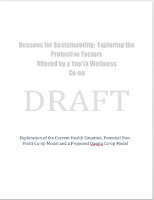By Kara Passey, 1st year MDP student
The concept of an Inuit Women’s Association was born out of conversations in the late 1970s, and put forward in a 1981 resolution by Inuit Tapiriit Kantami (ITK). Pauktuutit was created to address the existence of the unique barriers that Inuit women in Canada face in the pursuit of wellness for themselves and their families, and that it was necessary to create a specialized, concentrated organization to develop approaches to overcome these barriers.
 |
| Amauti at Pauktuutit |
The themes of their work encompass economic development/ financial empowerment, intellectual property and traditional Inuit ecological knowledge, housing, health (mental, physical, and spiritual), awareness campaigns (safety, AIDs, tobacco, drinking and driving), violence against women, justice, and participation in conversations pertaining to Indigenous policy and constitutionalism.
Despite the lengths at which they’ve built partnerships and networked with other regions, organizations, and systems of government, Pauktuutit struggles to have their voice heard at the national level. They are often only invited to conversations about policy and legislation via proxy of other organizations (such as ITK or the Native Women’s Association of Canada), or are not consulted at all. In some cases, such as the reports constructed by the Royal Commission on Aboriginal Peoples, they see their ideas and voices reflected within recommendations, but are not included in implementation processes.
This summer I had the opportunity to work with Pauktuutit on a research project that both analyzes the timeline of Inuit policy and constitutionalism (as implemented by the Canadian Federal Government), highlights the ways in which Inuit communities are experiencing colonization, and were not consulted in the creation of policy, legislation, and development projects that have effected them directly.
While this analysis helps to illustrate the reality of Inuit development and governance today, the second half of the paper describes the ways in which other national Indigenous organizations (NIO) achieved their status as recognized NIOs within constitutional processes, and also provides an analysis of the creation of Pauktuutit and the work they have done to date. The paper includes an explanation of Pauktuutit’s wholistic approach, their endless work towards the financial empowerment of Inuit women, inquiries into justice processes and violence against women, as well as court challenge activities. Pauktuutit hopes to use this research to inform their requests of involvement in consultation processes, and to build a stronger relationship with the Canadian Federal Government in the pursuit of reconciliation.







